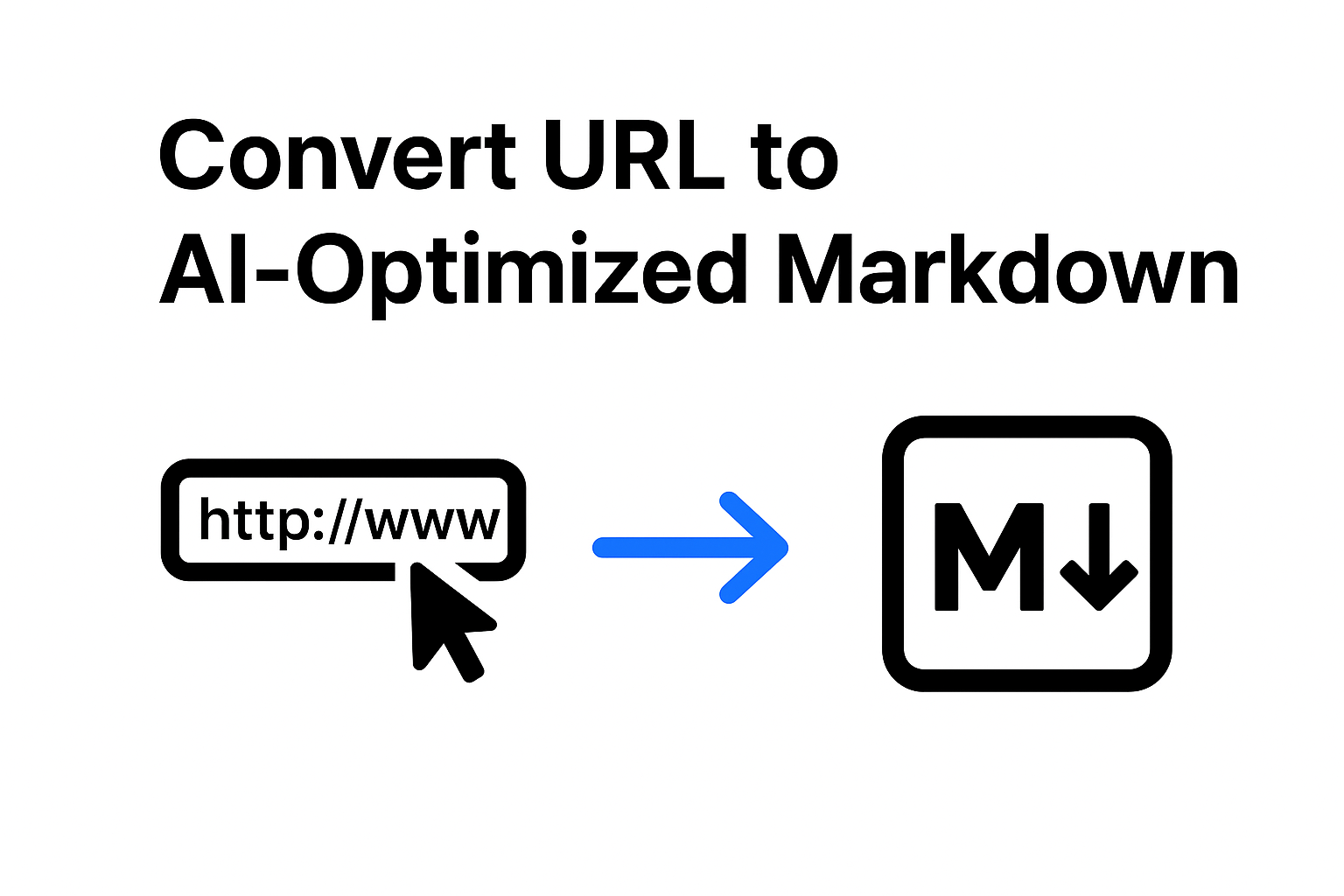AI delivers the best answers when given clean, structured Markdown instead of messy HTML. By stripping out ads, navigation menus, and visual clutter, you help convert URLs into AI-Optimized Markdown, you create content that’s easier for AI to process, faster to parse, and cheaper to run.
There are two powerful approaches:
- Convert URLs into Markdown using tools.
- Create dedicated AI-optimized pages for bots.
Both methods future-proof your content for the AI-driven web.
Option 1: Convert URLs into Markdown with Tools
If you want a quick, one-off conversion, tools and extensions can instantly process a page and return clean Markdown.
Recommended Tools
- Firecrawl.dev API – Converts pages to Markdown, extracts links, supports bulk operations.
- Jina AI Reader API – Smart parser that isolates the main article while removing clutter.
- MarkDownload – Browser extension for Chrome/Firefox with one-click capture.
- Copy as Markdown for AI – Adds YAML metadata to improve AI training workflows.
- Turndown.js Bookmarklet – Lightweight snippet for converting webpages directly in your browser.
Workflow
- Select the tool.
- Process the page or highlighted text.
- Copy the Markdown output.
- Paste it into your AI application or dataset.
Real-World Example: Marketing agencies use Firecrawl.dev to convert competitor landing pages into Markdown, then run them through AI for messaging insights—saving hours of manual cleanup.
Option 2: Serve AI-Optimized Markdown Pages
For larger sites or recurring AI processing, build and serve simplified Markdown versions of your key pages.
Steps to Build AI-Optimized Pages
- Create Clean Markdown Versions
- Remove ads, sidebars, and footers.
- Keep only primary content and images.
- Use Semantic HTML
- Apply
<article>,<section>,<main>for logical structure. - Maintain a clear
<h1> → <h2> → <h3>hierarchy.
- Apply
- Set Up an
llms.txtFile- Guide AI crawlers (GPTBot, ClaudeBot, PerplexityBot) to optimized pages.
llms.txt:User-agent: * Allow: /ai-optimized/* Disallow: /private/ Disallow: /forms/ User-agent: ClaudeBot Allow: /research-summary/* - Enable AI Crawlers
- Ensure robots.txt and firewall rules don’t block AI bots.
- Add Schema Markup
- Use JSON-LD to structure your data with schema.org.
- Boosts factual accuracy in AI responses.
- Route AI Agents to Clean Versions
- Detect AI user agents on your server.
- Serve the Markdown or simplified HTML version instead of the full page.
ALSO READ: How can I find hidden links on a website?
Here is an Example:
- SaaS companies create
/ai-optimized/versions of pricing pages so GPTBot always returns accurate plan details. - News sites publish Markdown “research pages” to ensure complex stories aren’t misinterpreted by AI summaries.
- Documentation platforms like ReadTheDocs expose clean Markdown routes, making it easy for AI to process.
Example Workflow Diagram
flowchart TD
A[Page URL or AI Request] --> B{Choose Method}
B -->|Quick Task| C[Convert with Tool/API]
B -->|Scalable Solution| D[Serve AI-Optimized Markdown Page]
C --> E[Clean Markdown Output]
D --> E
E --> F[AI Model Processes Content Faster & More Accurately]
Best Practices for AI-Ready Markdown
- Write naturally – Use simple, conversational language.
- Answer questions directly – Organize content by intent, not just keywords.
- Summarize upfront – Place key insights at the top for quick AI referencing.
- Avoid duplication – Keep related content consolidated in one page.
- Validate Markdown – Use linters and preview tools to check formatting.
Conclusion
To prepare for the AI-first web, ensure your content is AI-ready:
- For quick conversions, use tools like Firecrawl.dev or MarkDownload.
- For long-term optimization, build dedicated AI-optimized Markdown pages with
llms.txtand schema markup.
By combining both strategies, your content becomes lightweight, accurate, and highly discoverable—not only by search engines but by the AI systems powering tomorrow’s answers.







